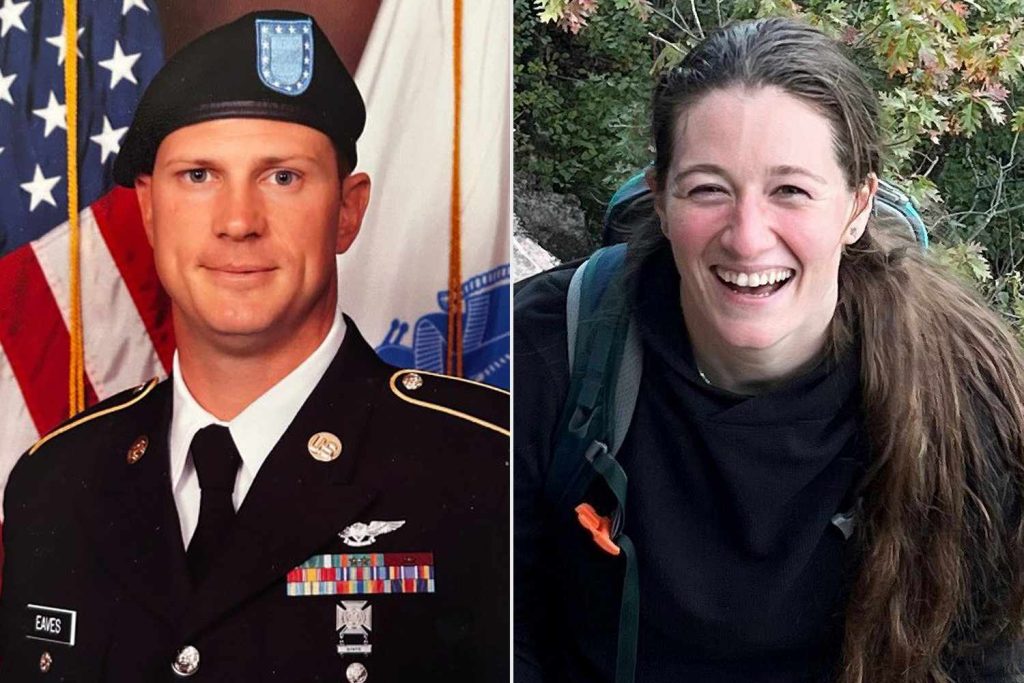:max_bytes(150000):strip_icc():format(jpeg)/Andrew-Eaves-and-Rebecca-Lobach-073025-9824f4c2ac5c4c6b9e5c54124103a2d0.jpg)
New details have been released about the final seconds before an Army helicopter collided with an American Airlines passenger jet in January near Washington, D.C., killing 67 people.
The information, released as part of a new set of government hearings, fuel further questions about the Black Hawk’s conduct in the sky.
On Wednesday, July 30, the National Transportation Safety Board began a three-day hearing into the crash, which has been under investigation for months.
It remains unclear if the collision was caused by some kind of mistake on the part of the helicopter crew. Air traffic controllers have also drawn scrutiny after reports of staffing issues that day; helicopters have long flown close to the airport, too.
As part of this week’s hearing, officials showed an animation of the minutes leading up to the fatal collision on Jan. 29 over the Potomac River next to Ronald Reagan Washington National Airport.
Never miss a story — sign up for PEOPLE’s free daily newsletter to stay up-to-date on the best of what PEOPLE has to offer, from celebrity news to compelling human interest stories.
According to the NTSB presentation, which expands and confirms some previous information released by authorities, American Airlines Flight 5342 last communicated with air traffic controllers when they were told to switch runways about five minutes before landing, which they agreed to do.
The jet was flying to D.C. from Wichita, Kan.; a number of young figure skaters were on board after attending an elite training camp.
At the same time, the helicopter, which was flying as part of a night evaluation for the pilot, Capt. Rebecca Lobach, was heading back to Fort Belvoir in Virginia.
The Black Hawk had a three-person crew, including Lobach, 28, as well as Chief Warrant Officer 2 Andrew Eaves and 28-year-old Staff Sgt. Ryan O’Hara.
Eaves, 39, was the reportedly instructor.
Crucially, the route the helicopter was flying had a maximum altitude of 200 feet near the airport — but the helicopter continued to fly well above that, varying between the mid-200 feet range up to more than 300 feet as it approached the airport.
About three minutes before the crash, Eaves told Lobach to “come down for me” because they were at 300 feet, according to the new NTSB presentation.
U.S. Army; army.mi
The presentation also shows the helicopter was twice warned by an air traffic controller about the approaching passenger jet, once about two minutes before the collision and again about 90 seconds later. Both times, the helicopter said it could see the other plane and requested a “visual separation,” in which they would be allowed to navigate around the jet. A controller approved that.
Five seconds after the second warning to watch out for the incoming plane, Eaves, the helicopter instructor, tells Lobach, “Alright, kinda come left for me ma’am, I think that’s why he’s asking,” to which she replies, “Sure,” the presentation shows.
Eaves then says “We’re kinda out towards the middle,” and Lobach says, “Okay fine.”
The entire exchange lasts about four seconds. The helicopter was 270 feet in the air. Not far away, the American Airlines jet was descending toward the runway and was only 320 feet in the air.
Three seconds later, at 8:48 p.m. local time, they collided.
The NTSB hearing will continue on Thursday and Friday.

